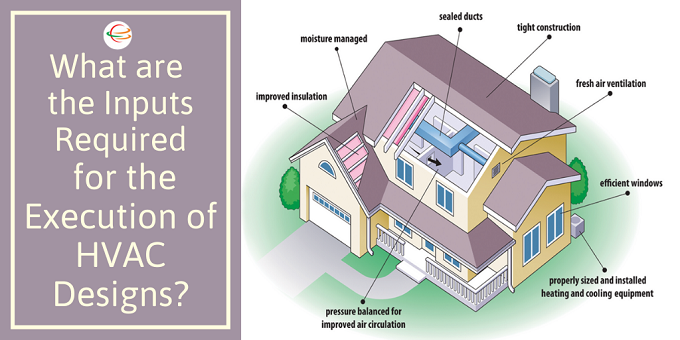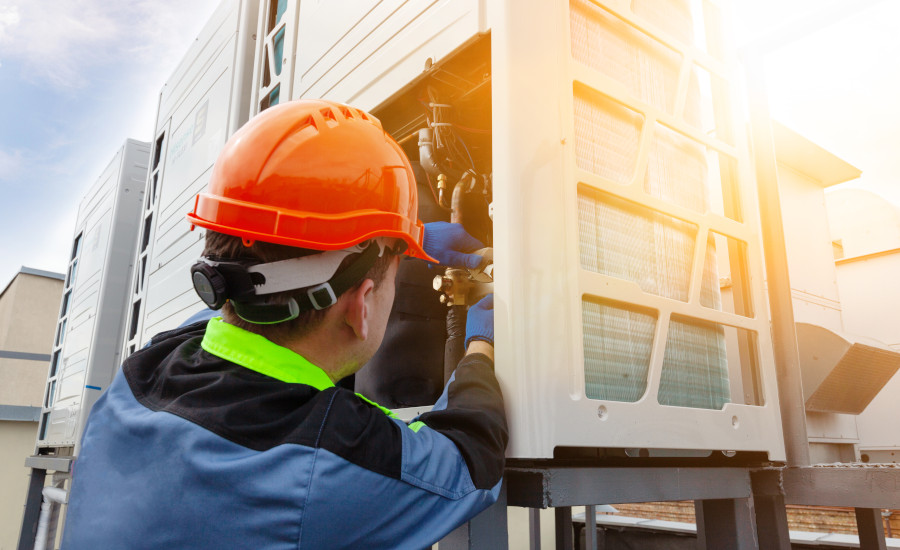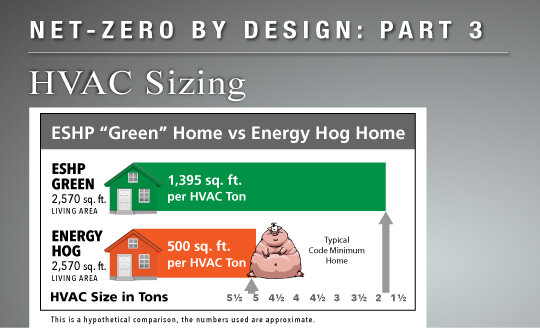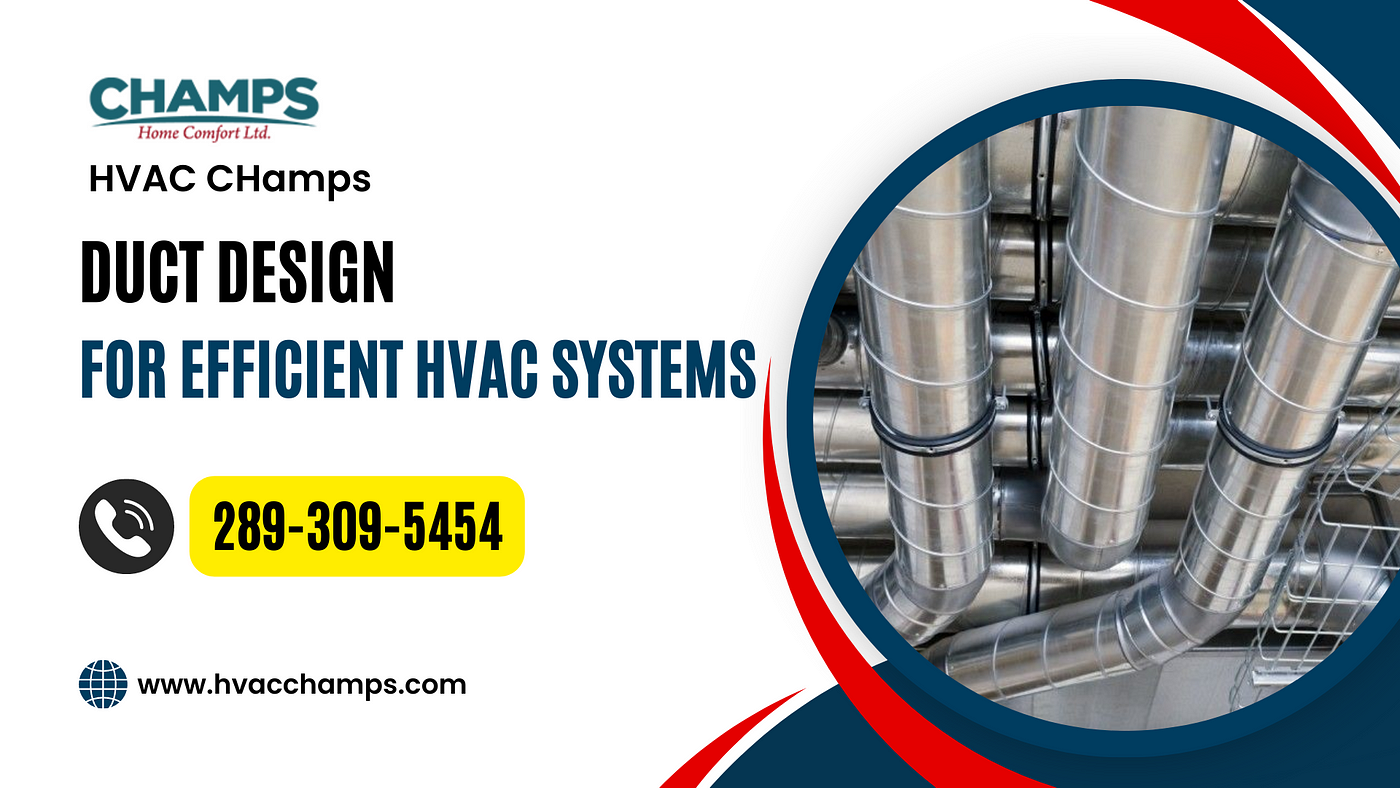In “Improving HVAC Designs for Enhanced Efficiency,” this article explores the latest innovations in HVAC designs that aim to improve energy efficiency and effectiveness. By examining the advancements made in the heating, ventilation, and air conditioning industry, you will discover how new technologies and methods are being implemented to maximize performance while minimizing energy consumption. With Diamond Air Design as a leader in HVAC repair in Pensacola FL and the surrounding area, their expertise and commitment to excellence play a crucial role in promoting sustainable and cost-effective solutions.

This image is property of www.chemionix.com.
Energy-Efficient HVAC Systems
If you’re looking to upgrade your HVAC system to one that is more energy-efficient, there are several factors to consider. From high-efficiency equipment to advanced control strategies, improved ductwork design to enhanced indoor air quality, smart building integration to renewable energy integration, and optimized maintenance practices to heat recovery systems, there are numerous ways to improve the efficiency of your HVAC system. In this article, we will explore each of these factors in detail and discuss how they can help you save energy and reduce your carbon footprint.
High-Efficiency Equipment
One of the most effective ways to improve the energy efficiency of your HVAC system is by investing in high-efficiency equipment. These systems are designed to minimize energy consumption while providing optimal heating and cooling performance. High-efficiency equipment may include heat pumps, air conditioners, and furnaces that have high Seasonal Energy Efficiency Ratio (SEER) ratings and Annual Fuel Utilization Efficiency (AFUE) ratings. By replacing your old and inefficient HVAC equipment with high-efficiency models, you can significantly reduce your energy consumption and lower your utility bills.
Proper Sizing
Another important factor to consider when optimizing the energy efficiency of your HVAC system is proper sizing. An oversized or undersized system can lead to inefficient operation and unnecessary energy usage. It is essential to have a qualified HVAC professional perform a load calculation to determine the appropriate size of your HVAC system based on factors such as the size of your home, insulation levels, and climate conditions. By ensuring that your HVAC system is properly sized, you can improve its performance and reduce energy wastage.
Energy Recovery Ventilation
Energy recovery ventilation (ERV) systems are designed to recover the energy present in the outgoing air and transfer it to the incoming fresh air. These systems use heat exchangers to exchange the heat and moisture between the two air streams without mixing them. By incorporating an ERV system into your HVAC system, you can reduce the energy required to heat or cool the incoming air, resulting in energy savings and improved indoor air quality.

This image is property of www.esmagazine.com.
Variable Refrigerant Flow Systems
Variable refrigerant flow (VRF) systems are another energy-efficient option for HVAC systems. These systems use variable-speed compressors and refrigerant flow control to deliver the precise amount of heating or cooling required in individual spaces. With VRF systems, you can achieve simultaneous heating and cooling in different areas of your building, allowing for greater flexibility and energy savings. These systems also offer zonal control, which enables you to adjust the temperature in each zone according to the occupants’ needs, further improving energy efficiency.
Smart Thermostats
The use of smart thermostats can greatly enhance the energy efficiency of your HVAC system. These thermostats utilize advanced technology, such as machine learning and internet connectivity, to learn your preferences and automatically adjust the temperature settings based on occupancy patterns and weather conditions. Smart thermostats also allow you to remotely control your HVAC system through a smartphone app, enabling you to optimize energy usage even when you’re away from home. By utilizing a smart thermostat, you can have better control over your HVAC system, ensure optimal comfort, and reduce unnecessary energy consumption.

This image is property of images.squarespace-cdn.com.
Advanced Control Strategies
In addition to smart thermostats, there are other advanced control strategies that can further improve the energy efficiency of your HVAC system.
Occupancy Sensors
Occupancy sensors are devices that detect the presence or absence of people in a room or area. By integrating occupancy sensors with your HVAC system, you can ensure that heating or cooling is only provided to occupied spaces. When a room is unoccupied, the temperature can be adjusted accordingly to conserve energy. Occupancy sensors are especially useful in larger buildings with multiple rooms and varying occupancy levels.
Demand-Controlled Ventilation
Demand-controlled ventilation (DCV) is a strategy that adjusts the amount of fresh air brought into a space based on occupancy and indoor air quality requirements. DCV systems use sensors to measure carbon dioxide levels, which are a good indicator of occupancy. By only providing the necessary amount of outside air, DCV systems can significantly reduce the energy needed for conditioning and distributing the air, resulting in energy savings and improved indoor air quality.
Zoning
Zoning is a method of dividing a building into separate areas or zones that can be independently controlled for heating, cooling, and ventilation. By implementing zoning in your HVAC system, you can customize the temperature settings in different areas according to their specific needs. For example, you can reduce cooling in unoccupied zones or adjust the temperature in different zones based on their orientation to the sun. Zoning can optimize energy usage and improve occupant comfort by providing personalized temperature control.
Optimized Setpoints
Optimizing the setpoints of your HVAC system can also contribute to energy savings. Setpoints refer to the desired temperature range for heating and cooling. By adjusting the setpoints to a slightly higher temperature in summer and lower temperature in winter, you can reduce the workload on your HVAC system and minimize energy consumption. It is important to find a balance between energy efficiency and occupant comfort when optimizing setpoints.
Improved Ductwork Design
Proper ductwork design is crucial for the efficient operation of your HVAC system. The following factors play a significant role in enhancing the energy efficiency of your ductwork.
Reduced Air Leakage
Air leakage in ductwork can result in significant energy losses. It is important to ensure that your ductwork is properly sealed and insulated to minimize air leakage. Sealing any gaps or cracks in the ducts and implementing efficient sealing techniques, such as mastic or metal tape, can help prevent air leakage and optimize energy efficiency.
Proper Insulation
Insulation is essential to prevent heat transfer and maintain the desired temperature of the air flowing through the ducts. Properly insulating your ductwork can help minimize heat gain or loss, reducing the energy required to condition the air. Insulation materials such as fiberglass or foam board can be used to insulate the ducts and improve energy efficiency.
Balanced Airflow
Balanced airflow is essential for maintaining consistent heating and cooling throughout your building. Ensuring that the airflow is evenly distributed to all the rooms and areas in your building can prevent energy wastage and improve overall comfort. Balancing dampers and adjusting airflow rates can help achieve balanced airflow and optimize energy efficiency.
Optimized Duct Sizing
Proper duct sizing is crucial for achieving optimal airflow and minimizing energy losses. Undersized or oversized ducts can result in inefficient airflow and increased energy consumption. It is important to have a professional HVAC contractor perform a duct sizing calculation to ensure that the ducts are sized correctly for your specific HVAC system. Properly sized ductwork can improve energy efficiency and prevent unnecessary strain on your HVAC equipment.

This image is property of pureaircontrols.com.
Enhanced Indoor Air Quality
In addition to energy efficiency, indoor air quality (IAQ) is another important aspect to consider when designing an HVAC system. Poor indoor air quality can have detrimental effects on occupant health and comfort. The following measures can help enhance the IAQ of your building.
Air Filtration Systems
Air filtration systems play a crucial role in removing airborne particles, allergens, and pollutants from the indoor air. By incorporating high-efficiency air filters into your HVAC system, you can improve the quality of the air circulating in your building. HEPA (High-Efficiency Particulate Air) filters are especially effective in capturing smaller particles and are commonly used in hospitals and cleanrooms.
Ultraviolet Germicidal Irradiation
Ultraviolet (UV) germicidal irradiation is a technology that uses UV-C light to deactivate or destroy microorganisms, such as bacteria and viruses, in the air. By installing UV germicidal lights in your HVAC system, you can reduce the spread of airborne pathogens and improve the overall cleanliness of the air. UV lights are particularly beneficial in high-occupancy areas, such as hospitals or commercial buildings, where infection control is crucial.
Carbon Dioxide Monitoring
Carbon dioxide (CO2) monitoring is an effective way to evaluate the ventilation effectiveness and indoor air quality of a space. Elevated levels of CO2 can indicate inadequate ventilation or high occupancy levels, which can negatively impact IAQ. By installing CO2 sensors in your building and integrating them with your HVAC system, you can monitor and control the ventilation rates based on the actual occupancy, ensuring optimal IAQ and energy efficiency.
Humidity Control
Maintaining proper humidity levels is important for occupant comfort and IAQ. Excessively high or low humidity can lead to mold growth, respiratory issues, and overall discomfort. Incorporating humidity control devices, such as humidifiers or dehumidifiers, into your HVAC system can help regulate and maintain optimal humidity levels, ensuring a comfortable and healthy indoor environment.
Smart Building Integration
Integrating your HVAC system with other building systems can maximize energy efficiency and automation. The following integrations can enhance the overall performance of your building.
Building Automation Systems
Building automation systems (BAS) integrate various systems, including HVAC, lighting, security, and more, into a centralized platform for efficient control and monitoring. By integrating your HVAC system with a BAS, you can optimize energy usage by coordinating the operation of different systems based on occupancy, time schedules, and energy demand. BAS also enables remote monitoring and control, allowing you to make adjustments and identify inefficiencies in real-time.
Integration with Lighting Systems
Integrating your HVAC system with lighting systems can lead to significant energy savings. By connecting occupancy sensors to both the HVAC and lighting systems, you can ensure that heating, cooling, and lighting are only provided in occupied areas. When a room is unoccupied, both the HVAC and lighting systems can be automatically adjusted or turned off, reducing energy consumption and enhancing overall efficiency.
Integration with Security Systems
Integrating your HVAC system with security systems can provide additional energy savings and safety. By utilizing the occupancy sensors from the security system, your HVAC system can automatically adjust the temperature and ventilation based on occupancy status. Additionally, by integrating HVAC controls with access control systems, you can restrict access to certain areas and prevent unnecessary heating or cooling, further optimizing energy usage.

This image is property of miro.medium.com.
Renewable Energy Integration
Renewable energy integration in HVAC systems can significantly reduce reliance on traditional energy sources, such as electricity or gas. The following renewable energy solutions can be integrated into your HVAC system to maximize energy efficiency.
Solar-Powered HVAC
Solar-powered HVAC systems utilize solar energy to power the heating, cooling, and ventilation processes. By installing solar panels on your building, you can generate clean and renewable energy to offset the energy consumption of your HVAC system. Solar-powered HVAC systems can result in substantial energy savings and reduce your carbon footprint, particularly in areas with ample sunlight.
Geothermal Heating and Cooling
Geothermal heating and cooling systems utilize the constant temperature of the earth to provide heating and cooling to your building. These systems utilize geothermal heat pumps to extract the heat from the ground during winter and transfer heat back into the ground during summer. Geothermal systems are highly energy-efficient and can significantly reduce energy consumption compared to traditional heating or cooling systems. By harnessing the renewable energy stored in the earth, you can achieve long-term energy savings and environmental sustainability.
Optimized Maintenance Practices
Regular maintenance is essential to ensure the long-term efficiency and performance of your HVAC system. By following these maintenance practices, you can maximize energy efficiency and prevent costly breakdowns.
Regular Filter Replacement
Regularly replacing air filters is crucial for maintaining proper airflow and preventing the accumulation of dust and debris in your HVAC system. Clogged filters can reduce air quality, strain the system, and increase energy usage. It is important to check and replace filters according to the manufacturer’s recommendations to ensure optimal performance and energy efficiency.
Coil Cleaning
Coil cleaning is another important maintenance task that can enhance the efficiency of your HVAC system. Dust and dirt can accumulate on the evaporator and condenser coils, reducing heat transfer and forcing the system to work harder. Regularly cleaning the coils can improve heat exchange and ensure efficient operation. It is recommended to schedule professional coil cleaning at least once a year to maintain optimal performance.
System Performance Monitoring
Monitoring the performance of your HVAC system is crucial for identifying potential issues and optimizing energy usage. By utilizing advanced monitoring systems, you can track variables such as energy consumption, temperature differentials, system pressures, and other performance indicators. Real-time performance monitoring allows you to detect abnormalities, make necessary adjustments, and maintain peak efficiency.
Scheduled Inspections
Regular inspections by qualified HVAC professionals can help identify and address any potential issues before they escalate and cause major breakdowns. Inspections should include checks for refrigerant leaks, electrical connections, ductwork integrity, and overall system performance. By scheduling preventative maintenance inspections, you can ensure that your HVAC system is running efficiently and detecting any issues early on, preventing costly repairs and maintaining optimal energy efficiency.
Heat Recovery Systems
Heat recovery systems are designed to capture excess heat generated by HVAC systems and reuse it for heating or other purposes. These systems can significantly improve energy efficiency by minimizing heat wastage. The following heat recovery systems can be incorporated into your HVAC system.
Heat Recovery Ventilation
Heat recovery ventilation (HRV) systems recover waste heat from exhaust air and transfer it to the incoming fresh air. HRV systems utilize heat exchangers to exchange heat between the two air streams without mixing them. By recovering the heat from the exhaust air, HRV systems can preheat the incoming fresh air, reducing the energy required to heat it up, and improving overall energy efficiency.
Heat Pumps
Heat pumps can be used for both heating and cooling purposes. During the heating season, heat pumps extract heat from the outside air, ground, or a water source and transfer it indoors. During the cooling season, heat pumps reverse the process and remove heat from the indoor air, transferring it outside. By utilizing heat pumps, you can achieve efficient heating and cooling with minimal energy consumption, especially in moderate climates.
Geothermal Heat Exchangers
Geothermal heat exchangers utilize the constant temperature of the earth to exchange heat with the ground or groundwater. These systems can be used for both heating and cooling purposes, utilizing the stable ground temperature as a heat sink or heat source. Geothermal heat exchangers offer high energy efficiency, as the earth’s temperature remains relatively constant throughout the year, providing a consistent source of heat or coolness.
Building Envelope Improvements
Building envelope improvements can greatly enhance the energy efficiency of your HVAC system by reducing heat gain or loss through the walls, windows, and roof of your building. The following improvements can be made to the building envelope to optimize energy usage.
Insulated Windows
Installing insulated windows can help prevent heat transfer and reduce energy losses. Insulated windows are constructed with multiple layers of glass and insulating materials between them. These windows can significantly reduce heat gain or loss, improve thermal comfort, and contribute to overall energy efficiency.
Air Sealing
Proper air sealing is crucial for preventing air leakage through gaps, cracks, and openings in the building envelope. Air leakage can result in significant energy losses and make it difficult to maintain desired indoor temperatures. By sealing any gaps or cracks in the walls, floors, windows, and doors, you can minimize air infiltration and improve energy efficiency.
Proper Insulation
Proper insulation in walls, roofs, and floors is essential for minimizing heat transfer and maintaining comfortable indoor temperatures. Insulation materials, such as fiberglass, foam board, or cellulose, can be installed to provide a barrier against heat gain or loss. Adequate insulation can reduce the load on your HVAC system and optimize energy usage.
Technological Advancements
Advancements in technology have revolutionized the HVAC industry, providing innovative solutions for energy efficiency. The following technologies can be integrated into your HVAC system to enhance performance and efficiency.
Machine Learning
Machine learning algorithms analyze data from your HVAC system and learn patterns and trends. By continuously analyzing data related to occupancy, weather conditions, and energy consumption, machine learning algorithms can optimize the operation of your HVAC system in real-time. This adaptive control can help reduce energy usage, improve comfort, and extend the lifespan of your HVAC equipment.
Internet of Things (IoT)
The Internet of Things (IoT) refers to the interconnection of physical devices through the internet, enabling them to communicate and share data. IoT technology can be utilized in HVAC systems to gather real-time data on energy consumption, equipment performance, and indoor conditions. By integrating IoT devices and sensors into your HVAC system, you can monitor and control various parameters remotely, leading to improved energy efficiency and proactive maintenance.
Artificial Intelligence
Artificial Intelligence (AI) technology can be used to optimize the operation of HVAC systems by analyzing large amounts of data and making intelligent decisions. AI algorithms can learn from historical data and identify patterns to predict optimal temperature settings and energy usage. By leveraging AI, your HVAC system can adjust its operation based on occupancy, weather conditions, and energy demand, resulting in energy savings and improved comfort.
In conclusion, enhancing the energy efficiency of your HVAC system is crucial for reducing energy consumption, saving money on utility bills, and reducing your carbon footprint. By considering factors such as high-efficiency equipment, proper sizing, energy recovery ventilation, advanced control strategies, improved ductwork design, enhanced indoor air quality, smart building integration, renewable energy integration, optimized maintenance practices, heat recovery systems, building envelope improvements, and technological advancements, you can maximize the efficiency and performance of your HVAC system. Investing in energy-efficient HVAC solutions not only benefits your bottom line but also contributes to a more sustainable and environmentally friendly future.
The post Improving HVAC Designs for Enhanced Efficiency appeared first on Diamond Air Design.

